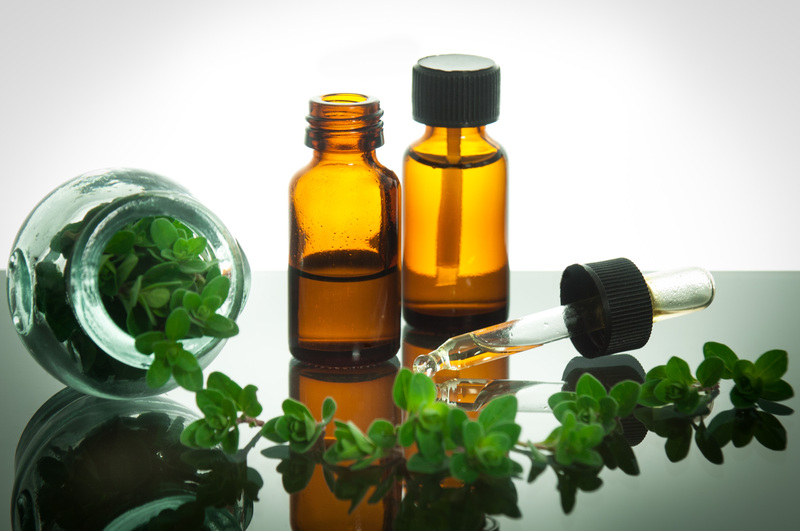Prevent bathroom mold with these essential tips
Posted on 23/06/2025
Prevent Bathroom Mold with These Essential Tips
Bathroom mold is an unwelcome visitor in many homes. It not only looks unsightly but can also be damaging to your property and harmful to your health. Fighting off mold growth in your bathroom may seem like a never-ending battle, but with the right strategies and preventive tips, you can win the war against this stubborn foe. In this comprehensive article, we'll explore the causes of bathroom mold, its effects, and practical, easy-to-follow steps to ensure your bathroom remains a clean, healthy, and mold-free haven.

Understanding Bathroom Mold: What You Need to Know
Mold in bathrooms thrives because of the humid conditions created by daily bathing, showering, and poor ventilation. Mold is a type of fungus that grows in multicellular filaments called hyphae, and it needs three things to flourish:
- Moisture
- Warmth
- Organic material
When these factors are present, mold spores settle on surfaces like walls, ceilings, tiles, grout lines, and even shower curtains, spreading quickly if left untreated. The most common type is black mold (Stachybotrys chartarum), but you may also encounter green or white varieties.
Health Hazards Linked to Bathroom Mold
Exposure to mold can trigger allergies and respiratory issues, especially in sensitive individuals. Common symptoms include nasal congestion, coughing, sneezing, itchy eyes, and even skin irritation. In more severe cases, mold can exacerbate asthma or other chronic lung conditions.
Why Does Mold Grow in Bathrooms?
- High Humidity: Bathrooms are notorious for their high levels of humidity, making them an ideal breeding ground for mold spores.
- Poor Ventilation: Without adequate airflow, moisture clings to surfaces, providing a suitable environment for fungi.
- Warm Temperatures: Warmth from hot showers and baths accelerates mold development.
- Organic Materials: Body oils, soap scum, and dust are all food sources for mold.
Preventing bathroom mold growth therefore means targeting these risk factors directly and consistently.
13 Proven Tips to Prevent Bathroom Mold
Implement these essential tips for preventing bathroom mold and you'll enjoy a cleaner, healthier household.
1. Ensure Proper Ventilation
- Use an exhaust fan: Always run the bathroom exhaust fan during and for at least 20 minutes after showers. This helps expel moist air quickly, lowering humidity levels.
- Open windows: If you have a window, crack it open to allow fresh air to circulate.
- Leave the door open post-shower: Allow steam to escape by keeping the bathroom door open after use.
Proper airflow is your first defense against mold in bathrooms.
2. Wipe Down Wet Surfaces After Use
- Always keep a squeegee or microfiber towel handy to wipe down shower walls, glass doors, mirrors, and sink areas.
- Pay special attention to grout lines where mold is most likely to accumulate.
Eliminating excess moisture is a simple yet powerful method for mold prevention.
3. Fix Leaks Promptly
- Check for leaking faucets, showerheads, or pipes under the sink. Even tiny leaks contribute to lingering moisture.
- Address water stains on walls and ceilings immediately as these may indicate hidden leaks behind drywall or tiles.
Quick repairs stop mold before it starts.
4. Use Mold-Resistant Bathroom Materials
- Consider installing mold-resistant drywall (green board or cement board) in areas susceptible to condensation.
- Choose tiles and grout with antimicrobial properties or treat grout with a mold-resistant sealer.
- Opt for shower curtains and bath mats made from mildew-resistant fabrics.
Investing in the right materials saves time and trouble in the long run.
5. Regular Cleaning Is Essential
- Clean your bathroom at least once a week using an antifungal cleaner or a simple homemade solution of vinegar and water.
- Target mold-prone areas such as tile grout, corners, around sinks, and beneath shampoo bottles.
Routine maintenance is the backbone of effective bathroom mold prevention.
6. Control Humidity Levels
- Invest in a digital hygrometer to monitor humidity. Keep levels below 50% where possible.
- Use a portable dehumidifier in large or poorly ventilated bathrooms.
Remember, mold cannot thrive in dry environments.
7. Seal Grout and Tiles Regularly
- Grout is porous and absorbs moisture. Apply a grout sealer every six months to prevent water from penetrating.
- For tiled showers, inspect and repair cracked or missing caulk promptly.
Well-sealed surfaces keep water out and mold at bay.
8. Wash Towels, Mats, and Curtains Frequently
- Mold spores often thrive on damp fabrics. Launder bath towels, mats, and shower curtains in hot water weekly.
- Ensure all bathroom fabrics dry thoroughly between uses; hang towels so air circulates freely.
Clean, dry textiles discourage mold growth.
9. Store Toiletries on Racks, Not Floors
- Keeping bottles and soaps raised on racks or shelves prevents trapped moisture and mold on surfaces beneath them.
Clutter-free surfaces are less prone to hidden mold spots.
10. Use Natural Mold Inhibitors
- Spray diluted vinegar or tea tree oil on high-risk surfaces as a weekly preventive measure.
- Baking soda also helps absorb excess moisture and deter spores.
Eco-friendly solutions protect your family and the planet while fighting mold.
11. Upgrade Your Paint
- Choose paints labeled as mold and mildew resistant. These coatings contain antimicrobial agents and provide added protection for ceilings and walls.
- Repaint every few years or whenever you spot peeling or bubbling in the existing paint.
High-quality paint saves time and money by reducing the chances of hidden mold.
12. Remove Standing Water Immediately
- After using the bathtub or shower, mop up pooling water. Don't let water sit on the floor or surfaces for extended periods.
Mold loves stagnant water; your quick action makes a big difference.
13. Organize Regular "Mold Audits"
- Once a month, inspect your bathroom thoroughly--behind the toilet, under the sink, in corners, and on the ceiling.
- If you spot any signs of mold, act fast to clean the affected area and investigate the sources of excess moisture.
Early detection is key to effective prevention.

Spotting Mold Before It Becomes a Big Problem
Mold typically takes the form of:
- Black, green, or brown spotting in grout or caulking
- Musty odors
- Staining on paint, wallpaper, or ceiling tiles
- Warped walls or peeling paint
Fast action is essential when you notice these signs. Clean small patches with an appropriate mold remover or diluted bleach, and always wear gloves and a mask for protection. For larger infestations (over 10 square feet), it's best to consult a professional mold remediation expert.
Conclusion: Keep Bathroom Mold Away for Good
With the right routine, an ounce of prevention really is worth a pound of cure. Preventing bathroom mold requires consistency and awareness. Adopt these bathroom mold prevention tips and you'll not only protect your bathroom's appearance but also your family's health.
In summary, key steps include:
- Promoting ventilation and reducing humidity
- Promptly fixing leaks and sealing tiles
- Wiping down surfaces and removing standing water
- Regular cleaning with mold-killing solutions
- Using mold-resistant materials and paint
By staying vigilant and proactive with these essential mold prevention tips, you will create a fresh, hygienic, and inviting bathroom environment that is free from mold year-round. Your home--and your health--deserve nothing less!
Frequently Asked Questions About Bathroom Mold Prevention
- What causes bathroom mold to return? - Mold will return if humidity remains high or leaks go unrepaired. Consistent moisture is the leading culprit.
- Can houseplants help reduce bathroom mold? - Certain plants like ferns and peace lilies can absorb some moisture and toxins, but they don't eliminate bathroom humidity by themselves.
- Does bleach remove bathroom mold permanently? - Bleach kills surface mold but doesn't address the root causes like leaks or high humidity. Always fix the underlying issue for lasting results.
- Will a bathroom without a fan always have mold? - Not necessarily, but bathrooms without adequate ventilation are at higher risk. Using a dehumidifier and opening windows can help compensate.
Take action today--implement these tips to prevent bathroom mold and enjoy a safer, cleaner bathroom for years to come!


